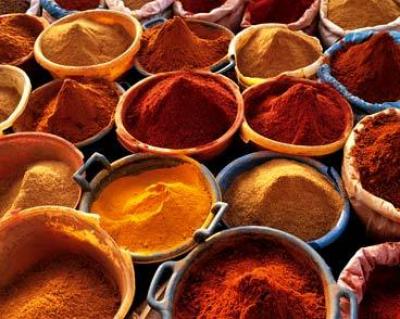Its that time of the year again when all of the food companies release their flavor and food forecasts. My favorite is from Adams® Extract & Spice, makers of the world famous Adams Best® “Since 1888”.
Following, are eight flavor and food trends that Adams® suggest you watch for in the coming year.
“Licking the Spoon”

Baking has made its way back to the kitchen! But, many of today's home bakers are looking for a balance between 100% scratch made and straight out of the box one step mixes. Baking kits, will find their way into the market, which will allow the consumer to be more involved, learn and understand the art of baking, and bring the love back to the kitchen, while being both budget and time friendly.
“BBQ 101”
Consumers are showing an interest in learning the art of traditional BBQing and techniques! The backyard BBQ will no longer mean just hamburgers, chicken, and steak. Backyard BBQers are learning the importance of meat preparation, basic rubs, and cooking low and slow over local hardwoods...cooking pulled pork, baby back ribs, and Texas-style brisket.
“Urban Canning”
A twist on classic canning, cold canning uses garden or organic vegetables from local farm to markets or grocers and is easy and fresh! With just a few ingredients, spices, a can, and a refrigerator, consumers can make their own flavored and pickled farm- to- table fresh vegetables in a snap.

"Birthday Everyday”
The trendiest flavor hitting the shelves is Birthday Cake! This indelible flavor brings us back to fond memories of our special day. Now reaching beyond the baked cake, you'll find the flavor in candy, yogurt, ice cream, cookies and more. Our taste buds can't get enough of that magical moment when vanilla, sugar, and butter meet.
"Food Brands you Trust”
Informed consumers are demanding that their foods are safe and of high quality! There will be an increased reliance on food brands that they know and trust to deliver safe and high quality products.

“Lemon Love”
Lemons are a traditional way to brighten foods! From the sweeter and less acidic Meyer to the plump Italian Sorrento, their flavor can enhance almost anything. BBQ & finishing sauces, salads, candies, yogurts, and desserts are a few ways we'll see an increased use of lemon flavor.
"Wedging its Way Back to the Table”
Move over bagged salads...the classic Iceberg Wedge is back! Served chilled with thick traditional homemade dressing, warm bacon, diced onion, and fresh ground pepper. Just one more delicious way to embrace farm- to- table style meals.
“Traditional Baking Flavors”
Dessert lovers are longing for traditional nostalgic flavors! Once, more commonly found in recipes over 60 years ago, flavors such as Butternut Vanilla, Black Walnut, Brandy, Peach, Root beer and Butter Pecan are finding a resurgence in today's desserts.
Adams® is constantly monitoring consumer research and data to gain insights on the newest flavor and food trends. Development of the the Adams® Flavor and Food Forecast involves a continuous process of cultivating insights from industry syndicated sales data, Adams®product sales mix changes, industrial ingredients, food service, and food retailing trends, internet search data and collaboration with chefs, food scientists and product development experts.






